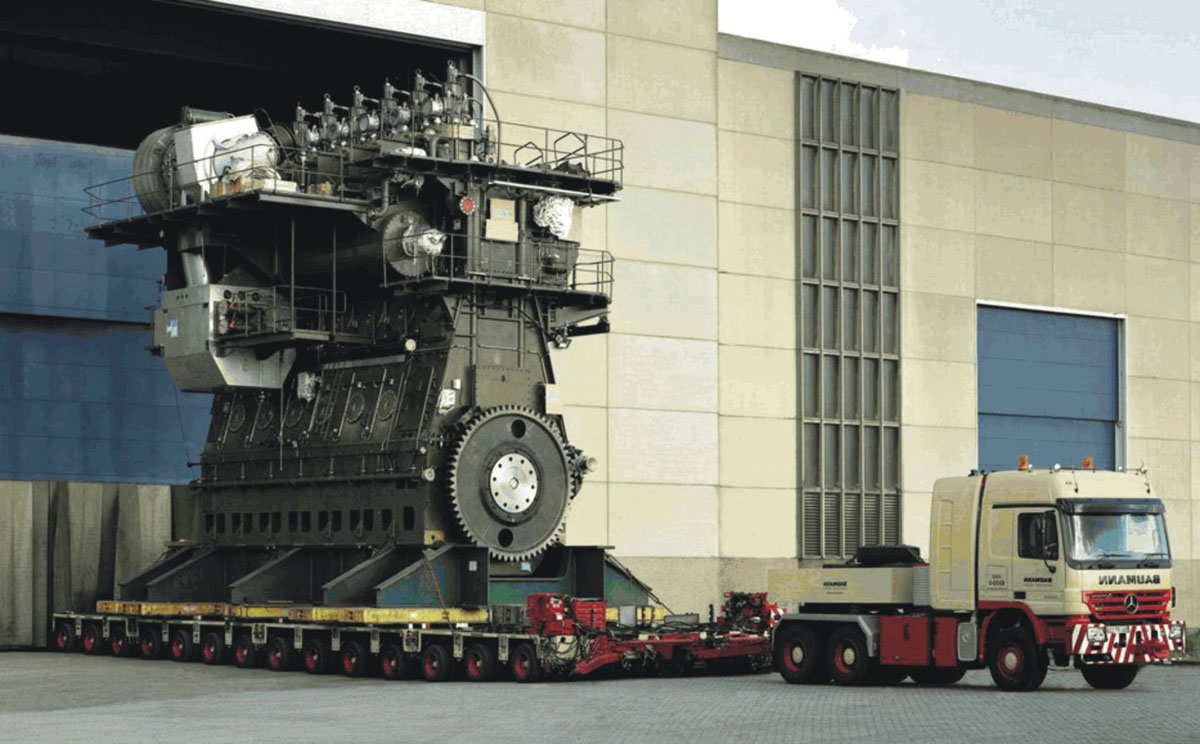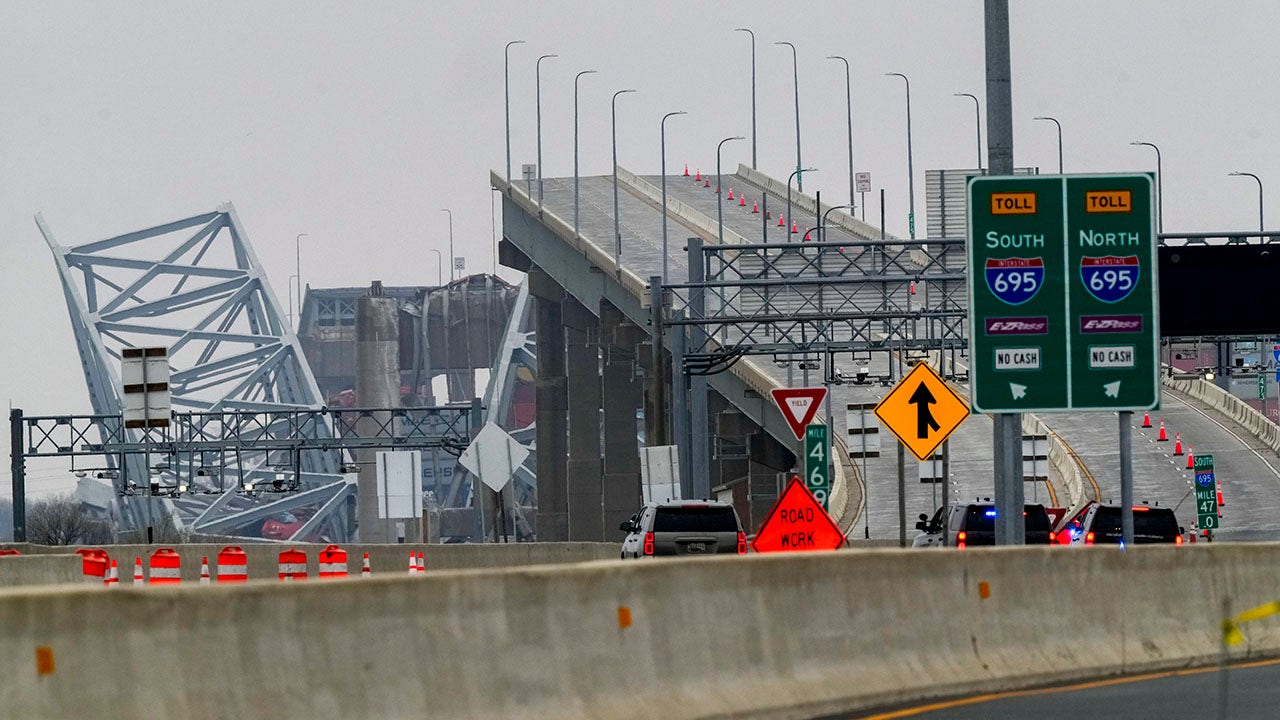Burt Gummer
May Have Shorter Meme Posting Times Than U Normies
Staff member
2A Bourbon Hound 2024
2A Bourbon Hound OG
Charter Life Member
Benefactor
Vendor
Supporting Member
Salesman of the Year
Multi-Factor Enabled
Those Wartsilas run at around 60 RPM as I recall.Amazingly, it is not a diesel electric ship, like a locomotive... instead the fixed pitch propeller on it's single shaft is coupled to the diesel main engine. That's pretty low tech propulsion for a ship built in 2015.

Yup... Wiki says 82.5 RPM and 22 knots. 😲Those Wartsilas run at around 60 RPM as I recall.

Thank you for posting. Seems like a logical argument from a knowledgeable person. In my humble opinion, it was not an accident. Nor was it a terrorist attack. I believe it was negligence that led to this horrible incident. It’s already been said in this thread so I won’t repeat everything. Large transportation companies do everything they can to cut cost. And the first thing that usually goes is vehicle or in this case ship maintenance.Interesting perspective from another site:
"I'm a harbor pilot in Texas.
While it is not a normal thing for a ship to "black out", it does happen. The causes could be endless.
In my 20 years of working on ships all over the world, I can easily think of half a dozen black outs that I've experienced first-hand. Every one of them was caused by a multitude of things.
The most common systems that cause blackouts are the fuel and exhaust systems. These ships are constantly getting new green policy after new green policy thrown at them because they are big easy targets for environmentalists. I get it. These policies include, but are not limited to, running only low-sulphur diesel fuel, which is cleaner but much less efficient. And there are more and more filters and sensors on the systems these days due to green policies, as well as additional scrubbers and urea systems to keep the exhaust clean. All of which are more potential points for problems and failures. If something isn't running right, it can cause a black-out. The International Maritime Organization has recently required engine power and shaft limiters to be in place to reduce engine speeds and thus reduce emissions. These limiters can be mechanical, or software based. They are supposed to be removed for pilotage, that's a topic we are currently working through nation-wide. Some shipping companies are not allowing their vessels to remove the limiters, even for pilotage in congested waters for fear of being fined. Anyway, there are so many moving parts that all need to be working and communicating correctly to move these ships.
When the main engine (plant) goes down on a cargo ship like Dhali, power is lost across the entire vessel. Lights, pumps, motors, fans, A/C, heat, steering gear, everything is lost. An emergency generator is supposed to automatically kick on (tested and ran weekly) and provide power to what we always called the E-bus. That bus panel is normally powered by the main generator(s) but is the only one connected to the E-gen. It will only have special "emergency" equipment like the fire pumps and other fire suppression systems, a couple ballast pumps and ballast valve controls, some lighting, and steering gear. I would imagine that when the ship went black, the plant was lost, less than a minute later the lights coming back on might have just been the E-gen coming on and powering that specific bus. It was not until the big puff of black smoke rolls out that they got an engine order. Probably astern based on seeing the vessel yaw more to starboard and from listening to the news reports. The yaw to stbd is what a standard right-handed propeller will do when working astern.
This is all terrible for the loss of people and the families of those lost. It's terrible for the ship crew and pilots too who are going to be answering questions and maybe feeling blame. Hopefully there was no human error. Nothing directly at the exact lead up to the incident at least. I think the pilots did everything they could, who, remember, are really only there for guidance and local knowledge of the waterway. The captain is always in charge of the vessel and the crew, even when pilots are on board. The pilot(s) did an amazing job alerting the MD transportation and got the bridge traffic shut down as fast as possible. That call undoubtedly saved lives.
One thing that puzzles me is why they made a Mayday call. That's for when you are in distress, sinking and need help. As if THEY were about to die. An alert should have been made with a Pan Pan call or maybe even just a Securite to alert other traffic. Not asking for emergency assistance. Here I am monday morning quarterbacking.
One thing that always bugs me around a maritime incident is all the jack holes that start coming out of the woodwork saying their dad had a 30' sport fisher or they themselves have a 6-pack captain license to give guided pleasure boat trips so think they know all things maritime now.
I ruled out terrorism in my own mind right away because I just don't think 01:30 would have been their plan. They would have acted during rush hour. For the ship handling point of view this happened at the worst possible time and place along their transit. But it happened at the best possible time of day to reduce the injury and death toll. If there is a silver lining, that's it."

That’s the thing about safety issues in general. 99 times out of 100 you can get away with things, but that one time the results can be catastrophic.Large transportation companies do everything they can to cut cost. And the first thing that usually goes is vehicle or in this case ship maintenance.
Maybe switching from on board to remote control caused a glitch.The Dali has four diesel generators for the electrical system separate from the main propulsion engine. Losing propulsion does not cause a blackout.
Airplanes is scary.If you want to see an oversight or negligence kill hundreds of people, check out Green Dot Aviation on YouTube.
Slave owner.........Was Francis Scott Key racist? Why did they take down his bridge?
TLF...Total Electrical Failure...I guess TEF was taken by something else.A good article written by an experienced captain:

It used to be my job to drive ships under bridges. Things do go wrong
There but for the grace of God, as many mariners will be sayingwww.telegraph.co.uk
The article is blocked unless you sign up.Scam Pain, by Mexico's president.
My condolences to the actual families of all victims.

Mexico president says Baltimore bridge collapse shows migrants 'do not deserve to be treated as they are'
Mexico President Andrés Manuel López Obrador says the collapse of the Francis Scott Key Bridge in Baltimore shows migrants should be treated better.www.foxnews.com
I think we were promised one of those this year.Heard General Michael Flynn in an interview yesterday. He calls it a black swan event. In the “for whatever it’s worth” category.
If you have an iPad, reader mode bypasses their overlay crap.The article is blocked unless you sign up.
Just one? 🤔I think we were promised one of those this year.

One tug astern would be more effective than dropping an anchor. If P factor on the reversing propeller is what caused them to veer hard to starboard, a tug pulling hard astern could have kept them straighter, such that they might have missed the bridge support. At about 8 knots, following on a stern hawser is about all a tug could do.I don't see how two tugs could have stopped the ship, pushed it and slowed but not stop it at the time of power failure.

Tugboats left before ship reached Baltimore bridge. They might have saved it.
Key bridge collapse could serve as a wake-up call for the fast-changing shipping industry and its ever-larger vesselswww.usatoday.com
I’m gonna have to try that, that might be the best tip I’ve seen on the Internet in a while.If you have an iPad, reader mode bypasses their overlay crap.
don't we call electric ships "nuclear"?if this was an electric ship, this wouldn't have happened
without the benefit of cars jumping the tracks and taking some of their energy lateral.Moving what? 6/7 knots in a harbor, maybe?
I don't think you could build a pylon or bumper that could stop that.
One tug astern would be more effective than dropping an anchor. If P factor on the reversing propeller is what caused them to veer hard to starboard, a tug pulling hard astern could have kept them straighter, such that they might have missed the bridge support. At about 8 knots, following on a stern hawser is about all a tug could do.
We used a small tug astern when towing a construction barge through the Tiverton bridge on Fall River in Massachusetts. The channel isn't straight where it goes under the bridge, but having the smaller tug back down hard kept the tow centered.
I find myself thinking on this one a lot these days.
Shocking. /s
Shocking. /s
Guess the remote control was wired into everything
it probably just caches in 3 minute blocks in volatile memory before storing to nonvolatile.
I think you are onto something my friend.......Maybe our Federal Gov’t is just so incompetent everything looks like a conspiracy because sane people cannot fathom the depths to which we have sunk?
There is also an extension for Chrome that will do the same. Need to look, but I imagine the same for other browsers as well. Comes in handy.I’m gonna have to try that, that might be the best tip I’ve seen on the Internet in a while.
So, like power is required to record to black box?

